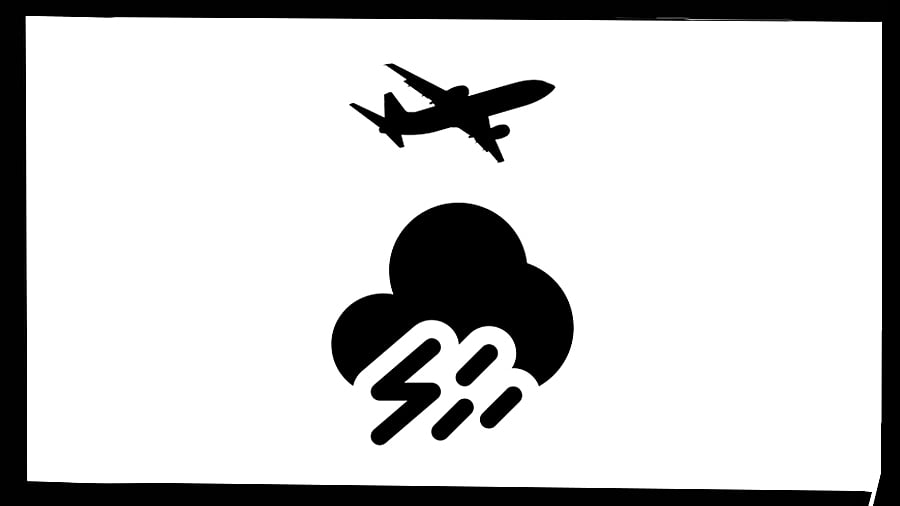
Every winter, large swathes of India and its neighbouring countries experience severe air pollution with particle concentrations reaching extremely high levels. The air quality index, marked in poor to severe categories, reflects a serious risk to health and well-being. One solution offered to tackle severe air pollution episodes is the ‘artificial rain’ – this commonly refers to generating rain through cloud-seeding technology but sometimes, it is used as an all-encompassing term to include other measures such as use of water sprinklers and water fountains. In early November 2024, a residential society in Gurugram sought to mimic rainfall using water sprinklers. As innovative as this may seem, it raises the question – can such reactive measures address the underlying challenges of poor air quality?
The use of water sprinklers highlights desperation as citizens attempt measures, within their reach, to improve the air quality in their immediate surroundings. But is artificial rain effective? Is it sustainable? Let’s explore the mechanism behind this technique.
What happens when it rains? When a water droplet falls through the air, it interacts with particles and gases, removing some pollutants through a process called scavenging. This depends on factors like pollutant type, particle size and the droplet size among others. An air parcel follows the streamlines around an object, which in this case is the water droplet. While the gas streamline navigates around the droplet, the particles in that air parcel behave differently depending on their size distribution. Large particles with higher mass are unable to make a turn due to inertia and collide directly with the water droplet (“impaction”) and get removed, while smaller particles, may follow a curved path and get intercepted if they come close enough to the water droplet. Very small particles that behave like a gas follow the streamlines closely and are not collected by either of these mechanisms. The removal efficiency of gases depends on the solubility of the gas in water and the concentration gradient between the air parcel and the water droplet.
Based on the above, it is obvious that there would be some removal of particles and gases by rain. However, for pollutant removal to be truly effective, there needs to be an increased chance of particles impacting and intercepting the water droplets. That is possible through a higher count of water droplets and an increased surface area (i.e., finer drops). So, the effectiveness is a function of intensity, duration and the water droplet size. This is why visible improvement in air quality is noticed after heavy rains as opposed to a brief drizzle.
Local impact, limited success
Theoretically, rain is expected to capture particles. However, outdoor air quality is an open system wherein air pollution boundaries are not contained. Air pollution is widespread, crossing state and city boundaries. While pollutant concentrations may decrease in areas with rain, pollutants from neighbouring regions without rain remain unaffected and can be transported by wind into the region where it rained. Therefore, once the rain stops, the pollutant concentrations will start to increase again. How quickly the pollutant concentration rises, depends on local emission sources, air quality in neighbouring regions and the extent of the rain. Mimicking rain through sprinklers or cloud-seeding is not very effective, as the impact, if any, is temporary and localised.
For dust emissions originating from specific sources, such as soil excavation or demolition activities in a small, focused area, implementing measures such as water sprinkling targeted directly at the source may serve as an effective control strategy. However, we must exercise judgement. If recommended control technologies are available to mitigate emissions at the source, they should be used instead of water sprinkling. Water is a precious resource, regardless of whether it is recycled water or fresh water. It is not sustainable to use artificial rain to clean up the air. We need to ask ourselves the following questions:
Over how large a region are we prepared to generate artificial rain and for how often? Is this a permanent or a long-term solution?
Cloud-seeding costs are prohibitive with mixed results and uncertain rain probability. The success of cloud-seeding in generating rain is highly dependent on meteorological conditions. Cloud-seeding may also cost upwards of Rs 1 lakh for a 1 km by 1 km area. For a city with an area of 500 to 1,000 sq km, the estimated cost is more than Rs 5 to 10 crore per instance. If a city were to try it once every month for 5 months, then the cost to the government is likely to be anywhere between Rs 25-50 crore, with no guarantee of success. Instead, the city or state government can invest this amount towards addressing emissions at source through economic policies, financial incentives and technology implementation.
The only way to ensure sustained improvement, over the long-term, is to employ a suite of measures appropriate for each source sector. These include reducing emissions at source, increasing fuel efficiency and transitioning to cleaner fuels for combustion sources, preventing waste burning, reducing fugitive dust emissions, and minimising private vehicle usage and encouraging uptake of public transport. Technologies exist in most cases but must be designed suitably. Research must be encouraged to foster innovation and scaling of technologies that will help address the problem.
(The writer is Programme Director – Air Quality, Sustainable Cities and Transport, WRI India)